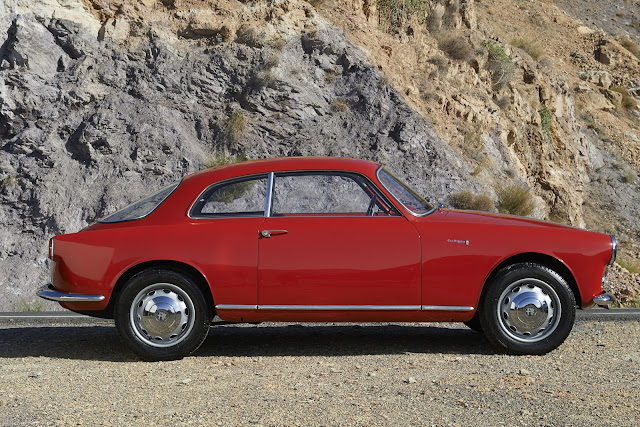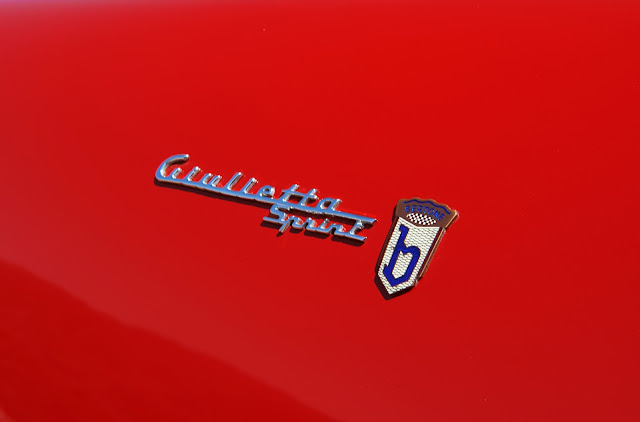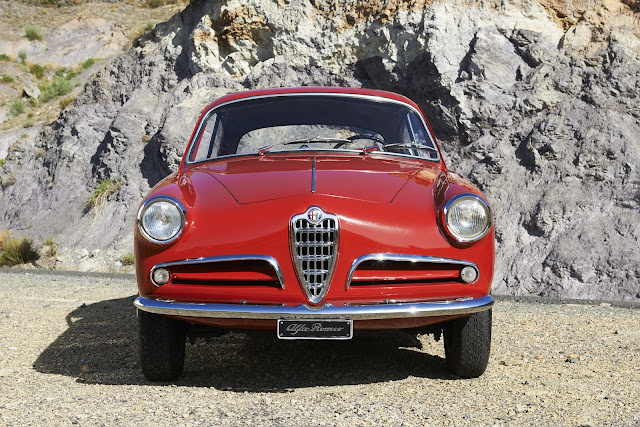Das erfolgreichste Alfa Romeo Coupé der 50er Jahre und seine nicht minder gefragten Derivate – Giulietta Berlina und Spider – schrieben Automobilgeschichte und sorgten gleichzeitig für wichtige volle Auftragsbücher bei der italienischen Automarke mit Sitz in Mailand.
want to know more
von Achim Stahn
Schon in den ersten Tagen der Automesse gab es rund 2.000 Bestellungen – eine für die damalige Zeit enorme Zahl.
Konkret entschieden sich über 28.000 für diesen Wagen, der bei den VIPs jener Zeit ebenfalls hoch im Kurs stand. Auch die Filmikonen Sophia Loren und Gina Lollobrigida hatten einen in ihrer Garage stehen.
19. April 1954
An diesem Tag präsentierte Alfa Romeo auf dem Turiner Salon erstmals einen Prototypen des Giulietta Sprint.Unter der Motorhaube des knapp vier Meter langen und 1,32 Meter hohen Coupés mit Heckantrieb steckte ein 1,3 Liter großer Leichtmetall-Vierzylinder mit zwei obenliegenden Nockenwellen.
Klingt imposant, die daraus resultierenden 65 PS bei 6.500 Umdrehungen sind es heute nicht, damals schon.
Das reichte für eine Spitze von 165 km/h – ebenfalls ein sehr guter Wert in den 1950ern.
Spektakulär auch eine Aktion kurz vor dem Marktstart: Über dem Alfa Romeo Werk im Mailänder Stadtteil Portello, wo die „kleine Julia“ (Giulietta) gefertigt wurde, sprangen zwei Schauspieler vor großem Publikum aus einem Hubschrauber.
Sie waren verkleidet als Romeo und Julia aus dem gleichnamigen Bühnenstück von William Shakespeare.
To our English Readers
Alfa Romeo Giulietta Sprint, “la fidanzata d’Italia” (‘Italy's girlfriend’) that never gets old
Turning 70 this year, the legendary Alfa Romeo Giulietta, “la fidanzata d’Italia” (‘Italy's girlfriend’) par excellence, is a model that has made automotive history and remains to this day a benchmark for fans of four wheels from all over the world.In the early 1950s
Having recently won two consecutive F1 championships with the Alfetta driven first by Farina then by Fangio in 1950 and 1951, the Milan-based brand wanted to produce a model that could sustain production volumes and appeal to a wider, less elitist audience, without betraying the main features that had already made Alfa Romeo such a success: style, performance, and reliability.
The Alfa Romeo Centro Stile set to work and there was no lack of proposals. Anyway, the winning candidate was developed at Bertone by the unsurpassable Franco Scaglione, the same designer as the almost-contemporary “2000 Sportiva,” the later “Giulietta Sprint Speciale,” and the wonderful 1967 “33 Stradale.”
The upshot was a low-slung car with extremely simple and clean sides, while the rear – with its heavily inclined wraparound rear window – featured two side ‘fins’ that brought dynamism to the whole: even when stationary, the Giulietta seemed to be on the move.
Alfa Romeo staff fell in love with the new car right away, and two weeks ahead of its launch, a preview was organized in the courtyard at Portello for insiders and authorities: two actors jumped out of a helicopter dressed as Shakespeare’s Romeo and… Juliet.
April 21, 1954
It was officially unveiled this day to the public on at the Turin Motor Show, in the coupé version only, an unusual occurrence at the time, when the sedan version always came first.
The Giulietta Sprint immediately struck a chord, and in the first few days of the Motor Show, around 2,000 orders were collected, a huge number for that time.
Alfa Romeo thus entered a new competitive arena, of high-performance compact coupés, and would set new technical and performance standards that put it leagues ahead of its competitors.
The Giulietta’s engine was a 1.3-liter twin-cam four-cylinder (a solution borrowed from racing) made entirely of aluminum based on aeronautics, a field in which Alfa Romeo had long been a benchmark of excellence.
It drove the car to a top speed of approximately 170 km/h, a very high speed at that time. In its “Veloce” version, the Sprint also won its class at the 1956 1000 Miglia, as well as countless victories on tracks and roads all over the world.
Italy's girlfriend
The Sprint became “Italy's girlfriend,” as one of the first cars to take a woman's name, having quickly won over a public, especially the middle and upper-middle classes who saw it as a symbol of what came to be known as Italy's ‘economic boom.
When the 100,001st Giulietta sedan rolled off the production lines at the Portello plant, Giulietta Masina (Federico Fellini’s muse) celebrated this major manufacturing milestone in person.
It was the first model from the Milan-based automaker to achieve a six-figure volume.
The Sprint was soon joined by several other versions such as the sedan, the legendary Spider that became so successful in the U.S., and the Giulietta SZ with its ‘truncated tail’: from 1954 to 1965, 177,690 Giuliettas were produced in all its variations, testifying to a success and appeal that shows no signs of diminishing despite the passage of time.
Tipps zur Blog-Nutzung
Alles rund um unsere Mobilität: Autos, Bikes, Räder, Auto-Reisen,
Nutzfahrzeuge, Insider-Tipps, Motorsport, Verkehrsrecht und vieles mehr
Zur Startseite dieses Blogs geht es hier:
https://mobilitaet-heute.blogspot.com
Einfache Themensuche
1. oben im Blog mit der Lupe
(Suchwort eingeben, alles dazu wird gezeigt)
2. Kästen am Textende anklicken
Interessantes senden an:
achim.stahn@interpress-ipr.de






Kommentare
Kommentar veröffentlichen